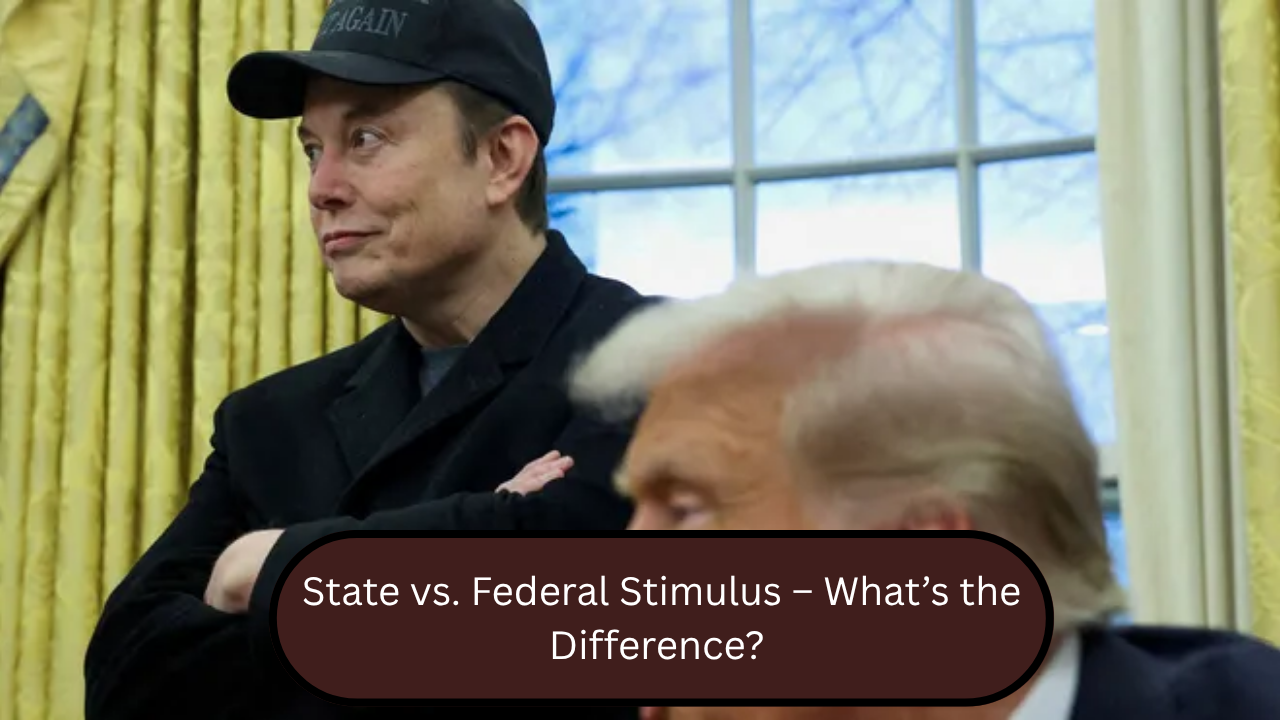During tough times like recessions, natural disasters, or pandemics, governments often provide financial help to people and businesses. This help is called a stimulus. In the United States, stimulus money can come from two levels of government — federal (national) and state. While both aim to support the economy, the way they work, who they help, and how they are managed can be very different. Understanding these differences can help you know where your support is coming from and what you may qualify for.
Federal Stimulus – National Help for All Americans
The federal government is the national government of the United States. When it provides stimulus, it usually affects the entire country. Federal stimulus plans are often large and are passed by Congress. These programs are designed to help Americans during nationwide crises like the COVID-19 pandemic or the 2008 financial crisis.
Federal stimulus often includes:
- Direct payments (like stimulus checks)
- Expanded unemployment benefits
- Tax credits for families and workers
- Loans or grants for small businesses
For example, during the COVID-19 pandemic, the federal government sent stimulus checks of $1,200, $600, and $1,400 to millions of Americans. These payments were the same across all states. Federal help is funded through national taxes, and everyone in the country may benefit, depending on eligibility.
State Stimulus – Local Support Based on State Needs
State governments also have the power to offer stimulus, but on a smaller, more local level. State stimulus plans are often created to respond to local economic needs and can vary depending on each state’s financial health and priorities.
Examples of state-level stimulus include:
- Bonus checks for specific workers (like teachers or healthcare workers)
- Rental assistance programs
- State tax refunds or rebates
- Help for undocumented workers, who may not qualify for federal aid
Not every state offers the same support. For instance, in 2022, California provided stimulus checks (called “Middle Class Tax Refunds”) to millions of its residents using a budget surplus. Other states like Florida or New Mexico also offered one-time payments or tax rebates.
State stimulus is funded through state budgets, which come from state taxes like income tax, sales tax, or special funds. Because of this, not all states can afford stimulus payments, especially during hard financial times.
Key Differences Between State and Federal Stimulus
While both types of stimulus aim to help people, there are key differences between state and federal aid:
- Coverage: Federal stimulus covers the whole country; state stimulus covers just one state.
- Amount and type: Federal aid is usually larger and more general; state aid is smaller and more targeted.
- Eligibility: Federal rules are the same for everyone, while state eligibility may depend on local conditions or income levels.
- Timing: Federal stimulus may take longer to pass but has a wider reach. State stimulus can be faster but limited in funds.
If you receive both types of stimulus, they usually do not conflict. You can benefit from both federal and state programs if you qualify.
Understanding the difference between state and federal stimulus is important, especially during difficult times. Federal stimulus helps all Americans on a national level and is usually passed by Congress. State stimulus is designed for local needs and varies from state to state. Both are important and work together to support people, jobs, and the economy. If you’re going through financial hardship, it’s a good idea to check for both federal and state programs, as you might qualify for support from both sources.
FAQ’s:
Q1. What is the main difference between state and federal stimulus?
A1. Federal stimulus is nationwide and affects all Americans, while state stimulus is provided by individual states and only applies to their residents.
Q2. Can I receive both federal and state stimulus at the same time?
A2. Yes, if you meet the eligibility requirements for both, you can receive money from both programs.
Q3. Why do some states offer stimulus and others don’t?
A3. State stimulus depends on a state’s budget and economic conditions. Some states may not have enough money to provide extra support.
Q4. How do I know if I qualify for state stimulus?
A4. Check your state government’s official website or local news sources for announcements, eligibility rules, and application steps.
Q5. Does state stimulus money affect my federal taxes?
A5. It depends on the type of payment and IRS rules. Some payments may be non-taxable, but it’s best to check with a tax advisor or the IRS website for guidance.
